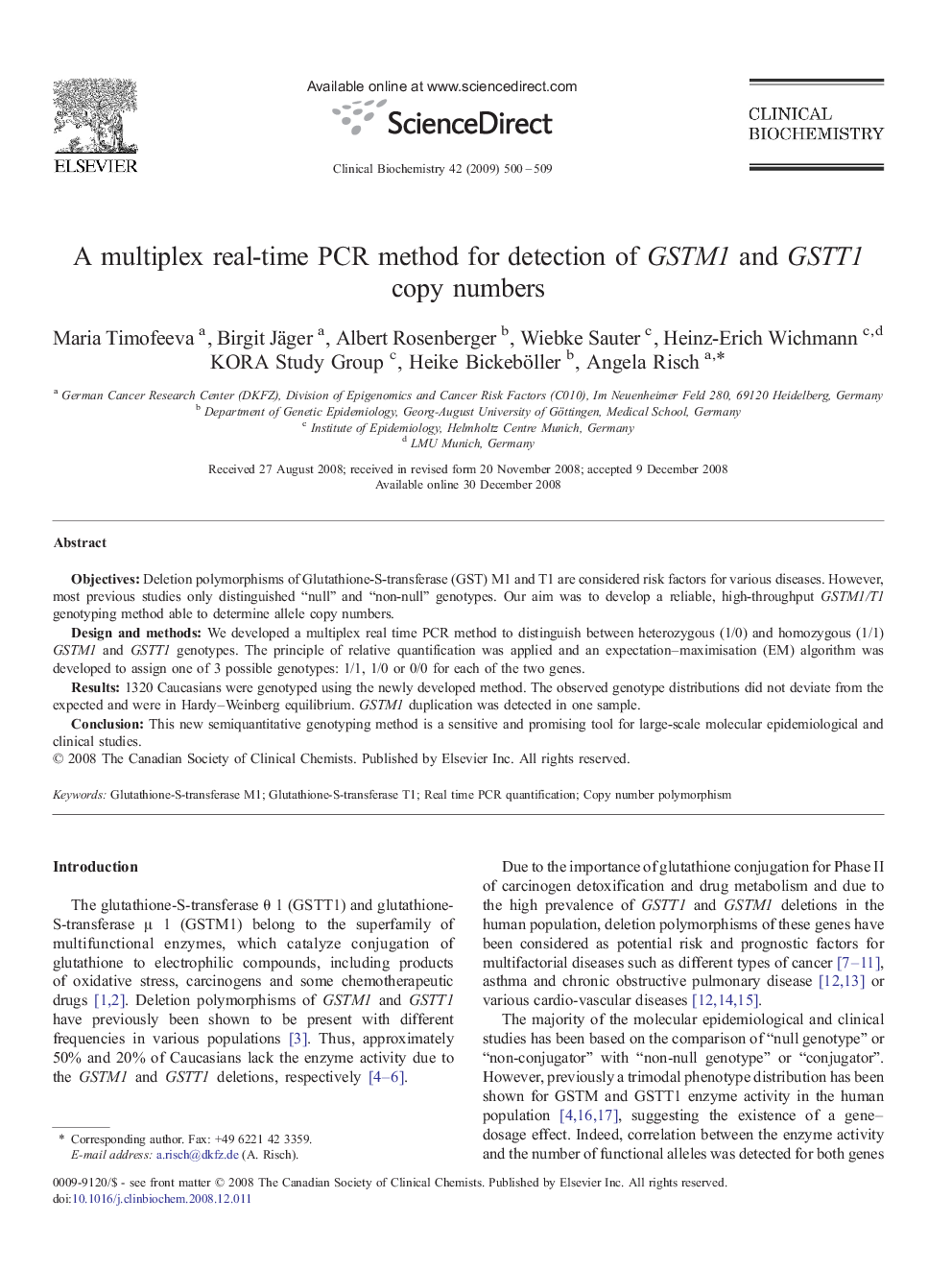| Article ID | Journal | Published Year | Pages | File Type |
|---|---|---|---|---|
| 1971454 | Clinical Biochemistry | 2009 | 10 Pages |
ObjectivesDeletion polymorphisms of Glutathione-S-transferase (GST) M1 and T1 are considered risk factors for various diseases. However, most previous studies only distinguished “null” and “non-null” genotypes. Our aim was to develop a reliable, high-throughput GSTM1/T1 genotyping method able to determine allele copy numbers.Design and methodsWe developed a multiplex real time PCR method to distinguish between heterozygous (1/0) and homozygous (1/1) GSTM1 and GSTT1 genotypes. The principle of relative quantification was applied and an expectation–maximisation (EM) algorithm was developed to assign one of 3 possible genotypes: 1/1, 1/0 or 0/0 for each of the two genes.Results1320 Caucasians were genotyped using the newly developed method. The observed genotype distributions did not deviate from the expected and were in Hardy–Weinberg equilibrium. GSTM1 duplication was detected in one sample.ConclusionThis new semiquantitative genotyping method is a sensitive and promising tool for large-scale molecular epidemiological and clinical studies.
